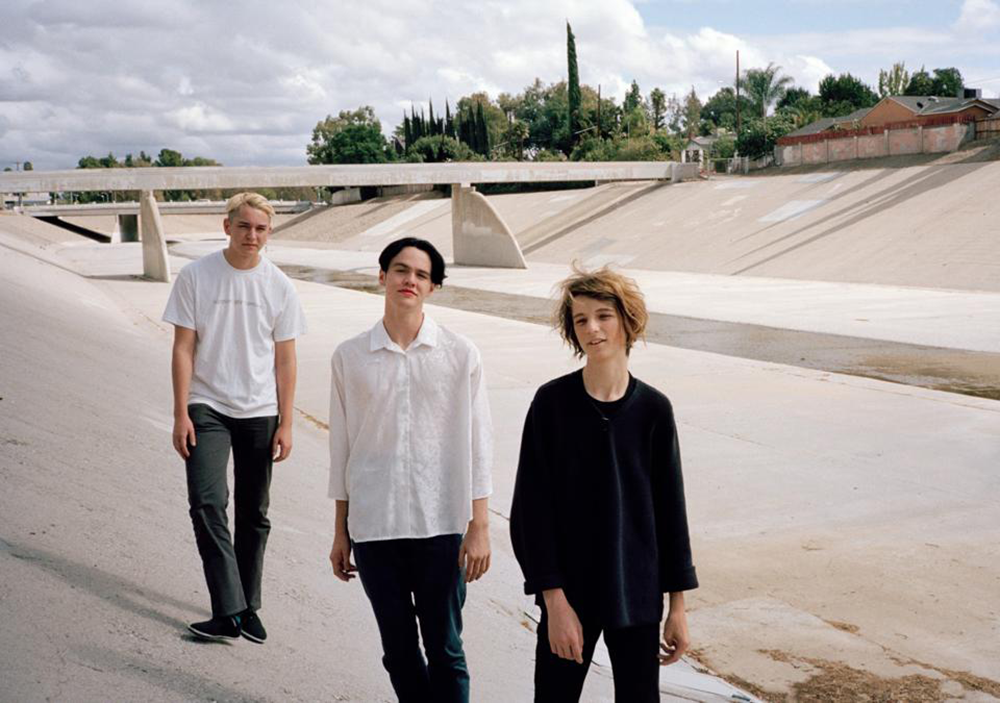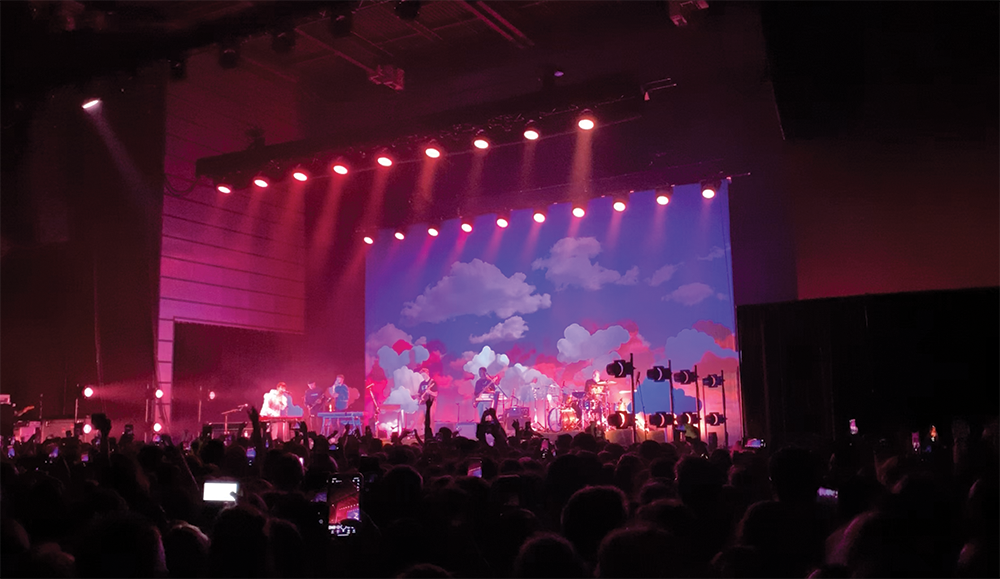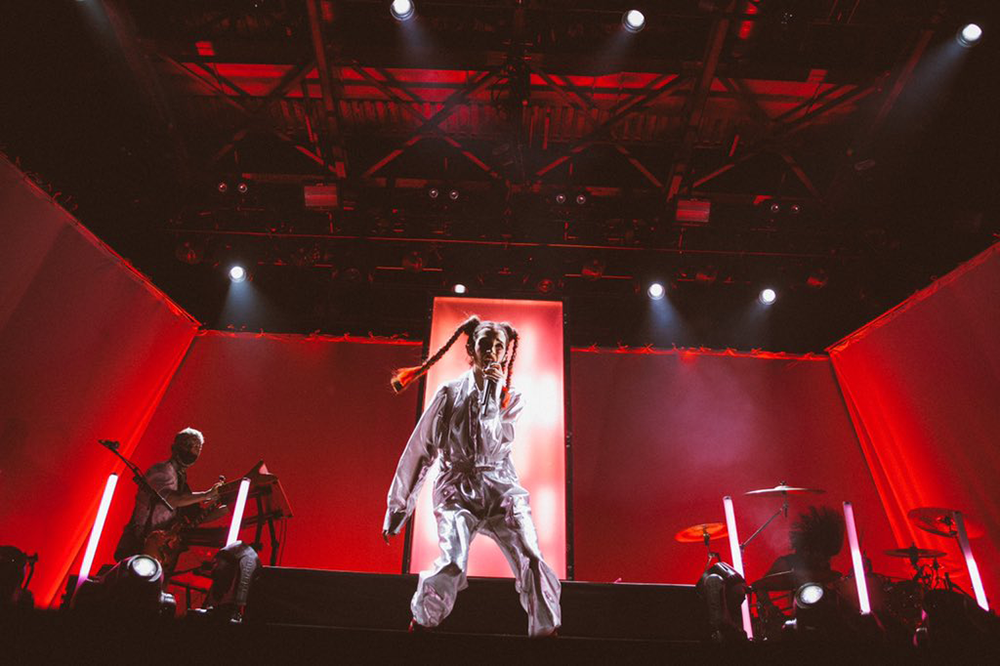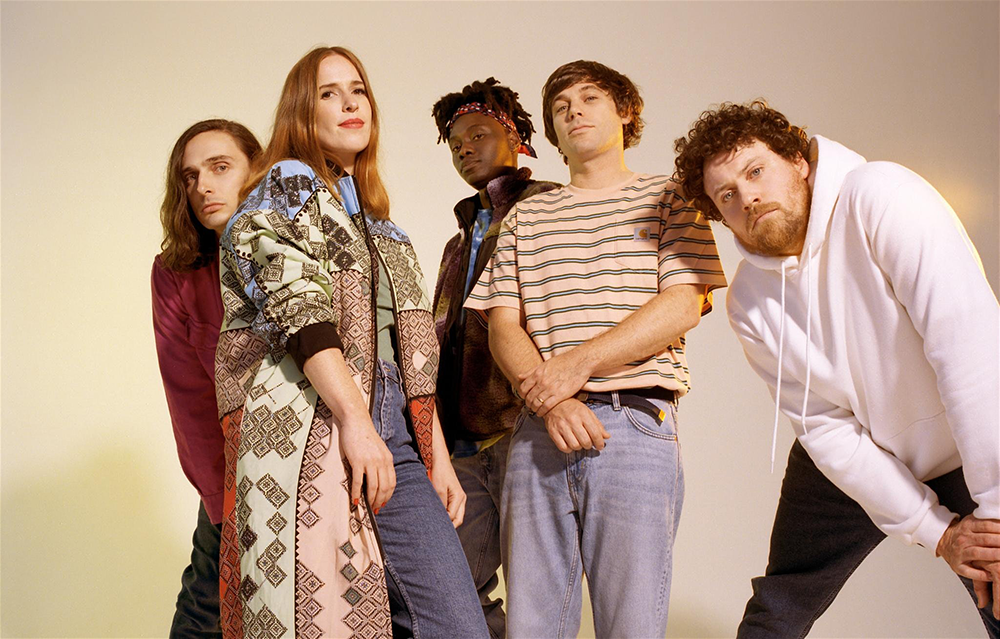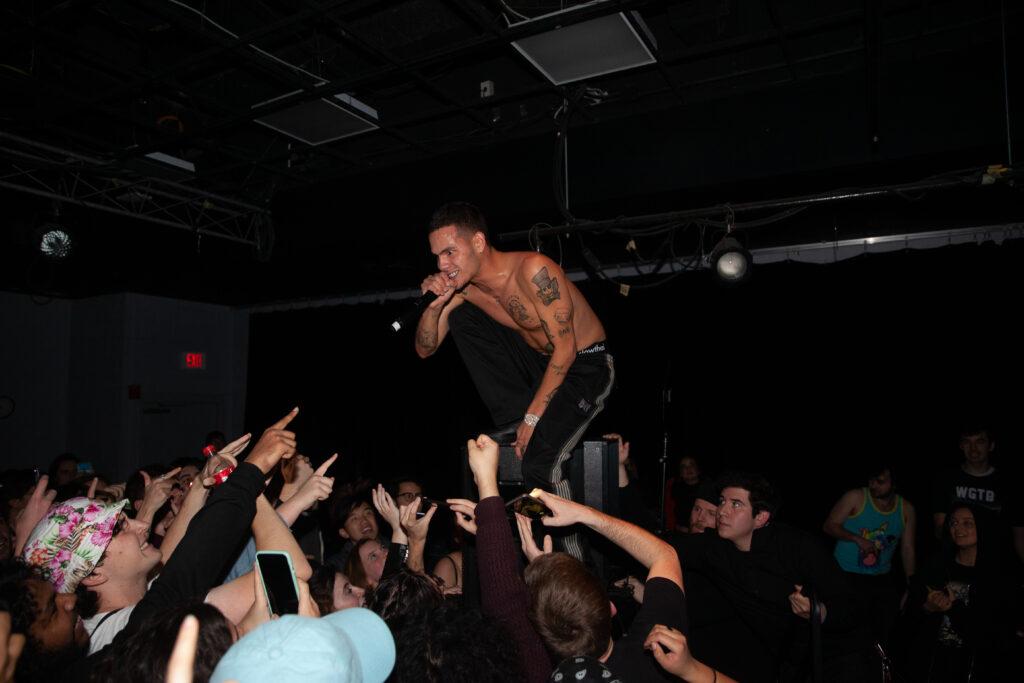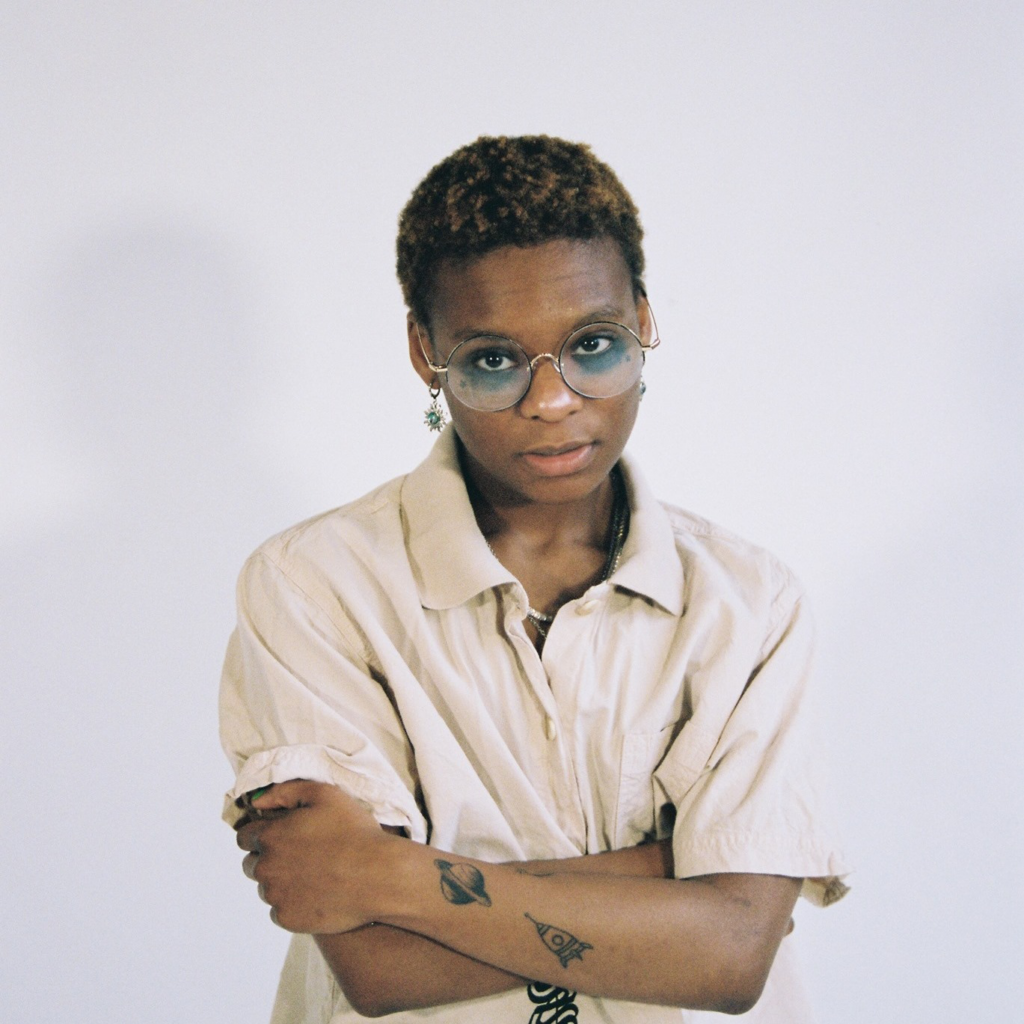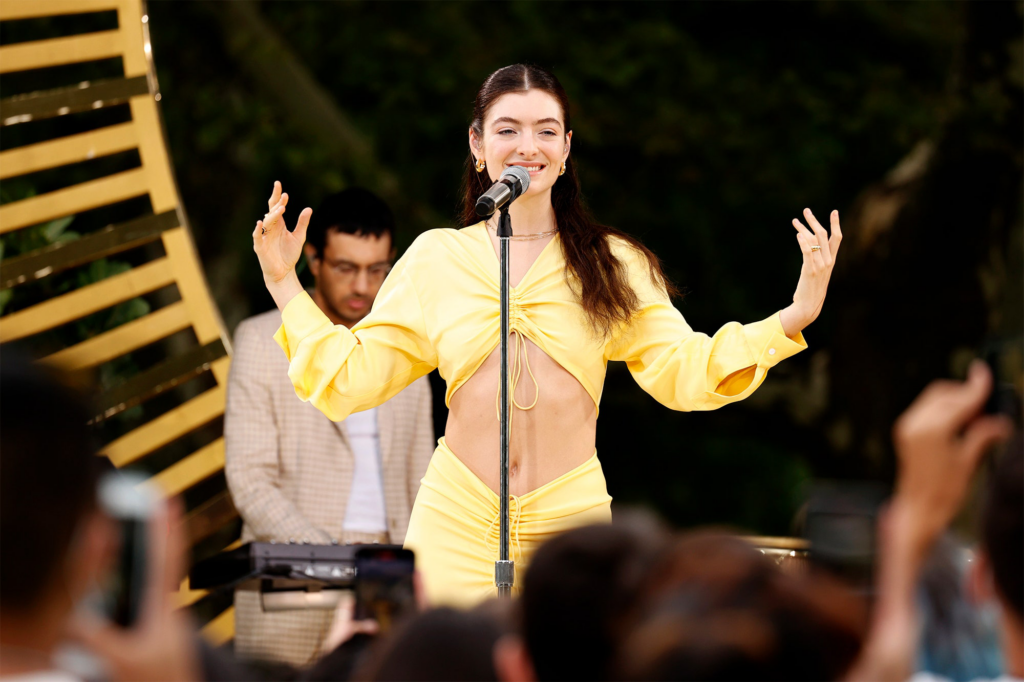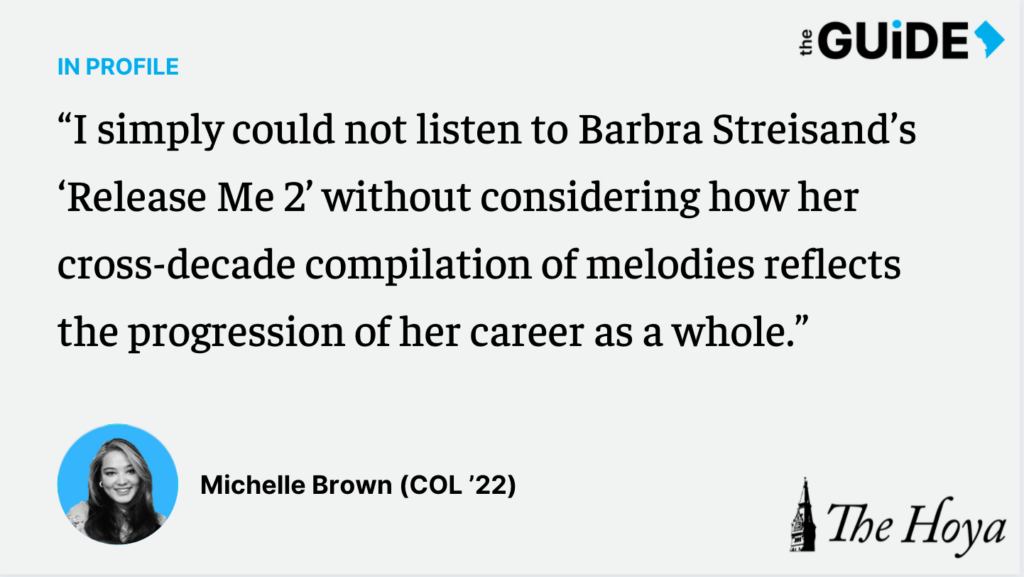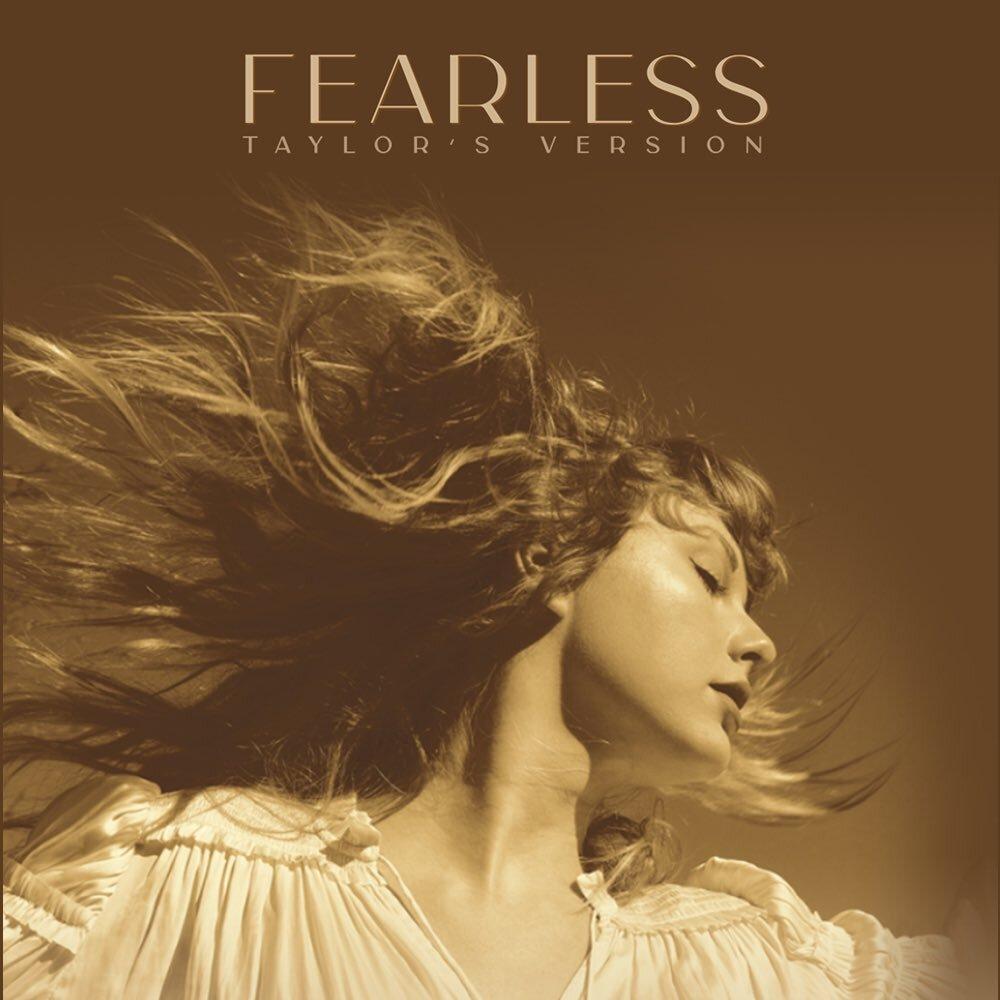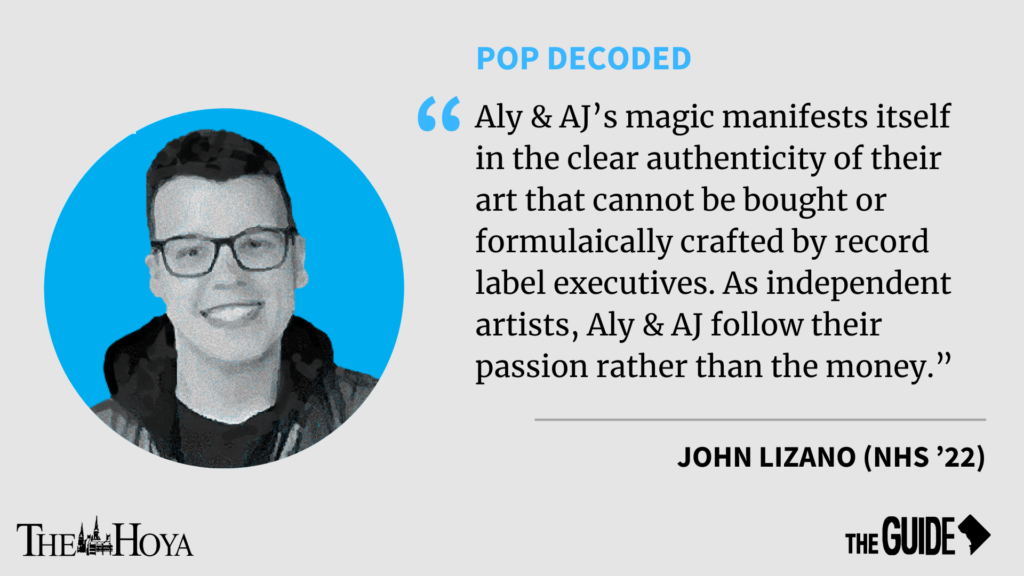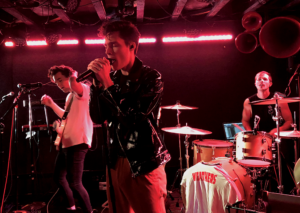
Weathers procured their position in the alternative rock space through the success of their debut singles “I Don’t Wanna Know” and “Happy Pills.” Masterfully adorned with warm percussion, searing guitar riffs and intoxicating melodies, the songs attained an anthemic status.
Despite the sincerity behind these early tracks, the Los Angeles-bred band felt detached from their melancholy subject matter. Collectively, the quartet, composed of vocalist and guitarist Cameron Boyer, lead guitarist Cameron Olsen, drummer Cole Carson and bassist Brennan Bates, decided to transform their sound. The lyrical depth and sonic maturity showcased in their latest album, “Kids In The Night,” and single, “Dirty Money,” magnificently demonstrate the magnitude of the band’s development.
The Hoya sat down with Weathers to discuss their evolution as a band, the personal stakes they hold and the impetus and motivation behind their music. Their responses have been edited for brevity and clarity.
“Kids in the Night” shifts thematically from the music you first released as a band while retaining the thoughtfulness of your earlier singles. What inspired the progression of your music from “Happy Pills” and “I Don’t Wanna Know” to songs on your debut album?
BOYER: We all knew each other way before “Weathers” and we were pretty young when we wrote “Happy Pills,” so we’ve grown up together, and a lot has changed, including our style in music. When those singles came out, we were completely different people than we are now. A lot of great things happened after the release of “Happy Pills,” but we decided that we wanted to let our music grow with us before we continued.
Essentially, we took a year and a half off to make this band and music completely our own, and that was really scary because we were on a major label. Imagine being on a major label and telling them, “Yeah, those songs you love? We’re changing everything.” It was terrifying.
OLSEN: We wrote close to 50 songs, and “Problems” was the first song where we thought, “This is it.” We did a lot of soul-searching before that. There’s always going to be those people who try to get you to take the more pop route or go in a lot of different directions, but we found exactly what we wanted.
BOYER: It’s funny, when we wrote “Problems,” we weren’t super stoked until our producer, Tim Pagnotta, showed us the demo. When we first heard it, Olsen and I knew that this sound was exactly what we had been looking for. After that came “I’m Not Ok,” and we thought “This is something. Something’s happening.”
So we zeroed in on that sound, wrote a ton of songs, narrowed it down to our best 11, and got “Kids In The Night.” At that point we were ready to show the world who we were.
Considering the heavy subject matter in some of your music, which song do you think had the most emotional or personal impact in the process of writing and recording?
BOYER: Personally, “Secret’s Safe With Me” has the deepest cut. My mother has schizophrenia and bipolar 1, and the song is essentially about the moments when I’ve been with my mom when she wasn’t really present. In the song, I’m basically hoping that wherever her mind takes her is someplace that’ll make her happier than her reality. It was really hard to write and singing it live, or even in just the vocal booth, is really tough.
OLSEN: I would say “I’m Not Ok,” at least for me. I feel like everyone really relates to the song and its subject matter. You can see it on people’s faces when they’re singing along; everyone’s gone through something like that. That’s why we open “Kids in the Night” with “I’m Not Ok,” because it encapsulates the entire album.

In your latest single, “Dirty Money,” you explore unconventional aspects of fame and success. How do you think your treatment of toxic relationships, self-discovery, and acceptance, both in this single and in the album as a whole, presents or creates a dialogue with your experiences of mental health in general?
OLSEN: A lot of the songs in “Kids in the Night” take a negative experience and make it positive but “Dirty Money” in a way is about a positive experience, success and how it can turn negative. So it keeps the conversation going by showing how the roles can be reversed.
BOYER: Something funny happened with “Kids in the Night,” in the sense that when we wrote and recorded the album, the actual topic of mental illness didn’t come up at all. It wasn’t until we released it when the fans took our album and started this conversation of mental illness. And that’s exactly what we wanted to happen, not specifically about mental illness, but we wanted people to take the album and make it their own. The album was about taking bad experiences, turning them around into good experiences, growing up and learning from them. When I look back at a lot of shitty things that happened, it’s like “yeah, that sucks” but look where we are today and look who I am today, and I feel comfortable with that. If it would’ve happened any other way, who knows where I’d be? It’s amazing how the album itself has grown into something that’s a lot bigger than us.
Cameron, you’ve helped co-direct some of your music videos. From a Tarantino-esque narrative juxtaposed against garage band scenes to shots reminiscent of film noir, your tastes seem to be heavily influenced by the film industry. How do you personally bridge the gap between your music and love of film?
Boyer: I first started a band when I was thirteen. When I was fourteen, I made my first short film and fell in love with it. Since then, I’ve been doing both things side-by-side, but it wasn’t until the “1983” music video when I was given the opportunity to actually direct one of our own, which I co-directed with my long-time friend Michael Costa. Having the opportunity to combine both my passions was really cool. Basically, I try to use the stylistic choices of certain genres to express what we want to communicate in our music. For example, with “1983,” I wanted to bring the music to life, while also maintaining the song’s ambiguity. Shooting in black and white helped keep that mystery. For “Problems” I was able to pay homage to some of my favorite directors, Quentin Tarantino, like you said. I felt like his style matched the song’s upbeat and chaotic nature. You might even be able to pick up on some “Pulp Fiction” references.
Thanks to the success of your earlier singles, you’ve gained tour experience, touring with the likes of Saint Motel and performing at Lollapalooza, even before the release of your debut album. What lessons did you learn from these experiences and how have these affected your tour and relationship with Castlecomer?
Carson: The tour with Saint Motel was the first cross-country tour any of us had ever done and we didn’t really know what we were getting ourselves into, but we just fell in love with it and being on the road. Also, I’m from Illinois and I had never been to Lollapalooza. I have always wanted to go but I was like “nah, I’m going there and I’m going to play it for the first time” so that was a really special moment for me, and I think that tour taught us all a lot of lessons. The Saint Motel guys are awesome, and they showed us the ropes so now we know what’s up when we show up to the venue. Learning all the technicalities and transitions early on really helped us run a smooth tour with Castlecomer, so now it’s just a lot of fun because we’re all on the same page and we can just focus on the music.



